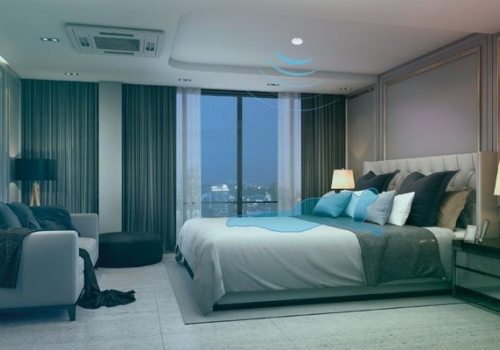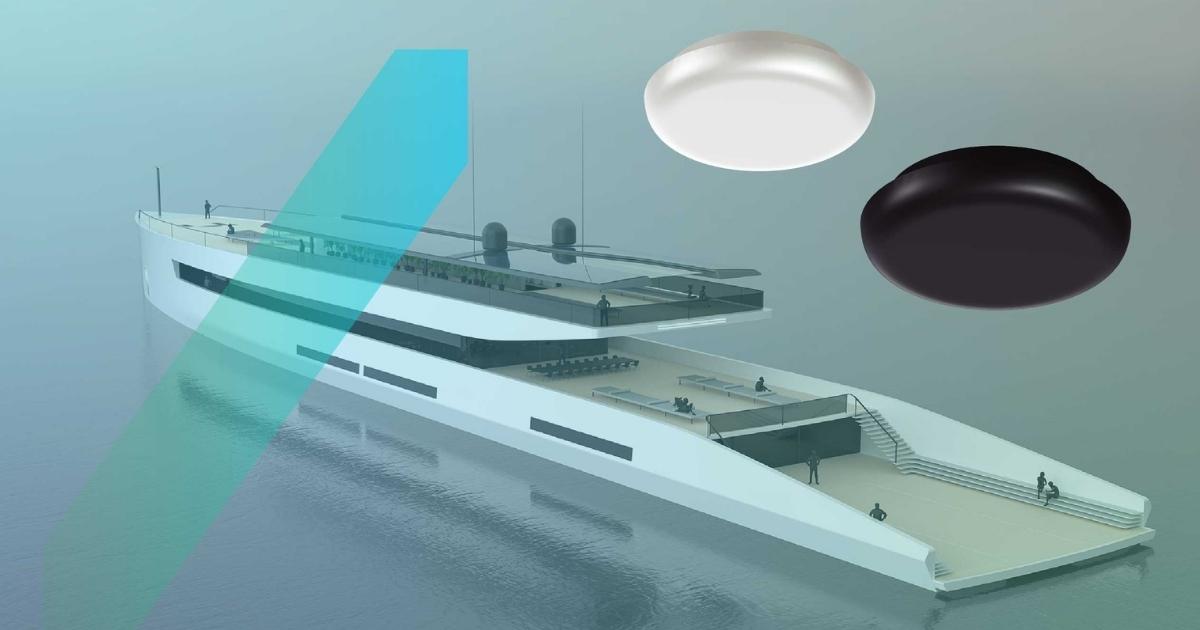From Strength to Strength: Enhancing Safety on board with ZediSense

Finland’s VTT SenseWay, the team behind ZediSense, has been making waves for the past two years in both the marine and real estate industries following the introduction of its game-changing ZediSense person-in-room sensor.
Using millimetre-length radar waves, ZediSense is able to reliably and accurately sense the presence of one or more people in a cabin or room. It is so sensitive that it’s able to detect a person in a cabin even if they’re asleep, by measuring the rise and fall of their chest. Multiple ZediSense sensors connect to a software and hardware back-end that provides real-time room occupancy information for the ship operator or property owner.
Roughly the shape of a hockey puck, ZediSense is intentionally discrete and designed to seamlessly blend with the room’s interior décor.
Safety in accuracy
Following robust testing both in-house and client led, the VTT SenseWay team has thoroughly established the accuracy of ZediSense’s capabilities.
Traditional person-in-room sensors have substantial limitations. Infra-red sensors have a narrow field of view and are easily fooled. They are also not sensitive enough to detect motionless targets - such as, again, a sleeping occupant. Carbon dioxide sensors are similarly insensitive. For those reasons, these systems cannot be relied upon to know for sure whether or not a space is occupied.
This has particular implications in an emergency situation, for example, one requiring an evacuation of a building or vessel. In that case, traditionally, staff are forced to go room by room physically checking whether those spaces are occupied, in order to ensure guests received the order to evacuate. With the benefit of a ZediSense system, operators are able to see in real-time and with complete accuracy, which spaces are occupied, allowing staff to go directly to those rooms to ensure that guests evacuate safely. It saves time in situations in which time is at a minimum.

Certified safety
ZediSense recently crossed a major milestone off the list towards getting its product into widescale distribution, with the reception of its CB certificate.
The CB Certification scheme is a multilateral agreement that effectively standardises certain safety rules for electrical and electronic products in order to guarantee access to worldwide markets. Basically, it tells customers that a product has met various global safety standards that make it safe to use anywhere in the world.
The CB scheme is shorthand for the ‘IEC System of Conformity Assessment Schemes for Electrotechnical Equipment and Components’, and originates in the European “Commission for Conformity Testing of Electrical Equipment” (CEE) which later merged into today’s IEC in 1985. It boasts a total of 54 member countries, including Austria, Australia, Belgium, Canada, Switzerland, Germany, Denmark, Spain, Finland, the Netherlands, Norway, Poland, Sweden Singapore, the US and several others.
Products that wish to be CB certified have the choice of using nearly 550 testing labs and upon successful completion of testing, the results may be submitted to any of a number of national certification bodies worldwide.
Making sense of energy usage
After months of work to get ZediSense CB certified, the team is looking forward to taking ZediSense to the wider European market. And the timing couldn’t be better.
Amidst the worst drought in Europe’s recorded history, a political storm emerged in the east, resulting in Russia turning off the natural gas taps fuelling some of Europe’s biggest economies. Now, with energy prices soaring and fears of long-term energy and fuel shortages, governments, businesses and consumers across Europe are racing to find creative, sustainable solutions for an increasingly difficult, stressful situation. And ZediSense is the answer.

ZediSense offers its users two levels of value in energy reduction and optimisation. First, energy usage in any space can be automatically optimised according to whether or not the space is occupied. In an unoccupied space, for example, a cruise ship or yacht cabin, or a hotel room or conference room, the air conditioning and lights can be automatically switched off and the curtains or blinds can be drawn. When the guest/user returns, all of that can be automatically reversed.
The second layer of benefits is data. The data gathered by a network of ZediSense sensors is fed into a server which, over time, accumulates a record of the usage of every room and space in which a ZediSense unit is located. In the long term, this information will allow ZediSense customers to optimise the way they design, redesign, build or remodel their ships, yachts and spaces so that their energy usage and costs are, ultimately, reduced.
This is where ZediSense’s substantial long-term value for users is going to be unlocked, according to its Lead Developer, Jaakko Saarela: “The room usage data generated by ZediSense can help our customers optimise not only their energy consumption, safety and security, but also their long-term development plans,” he noted. “We want to work with customers who are in need of this kind of data that they can then use for the improvement of their products and services, for an affordable price.”
ZediSense is designed, built and marketed by a team of experts who are standing by to work with you to reduce your energy bill and optimise the use of your cabins, rooms and other spaces. Contact them today for a personalised consultation.


Post your comment
You cannot post comments until you have logged in.
Login to post a commentComments
No one has commented on this page yet.
RSS feed for comments on this page | RSS feed for all comments